Why Galewood still doesn't have its own neighborhood library
Several proposals came and went, and the process is still in the same place as it was in 2010
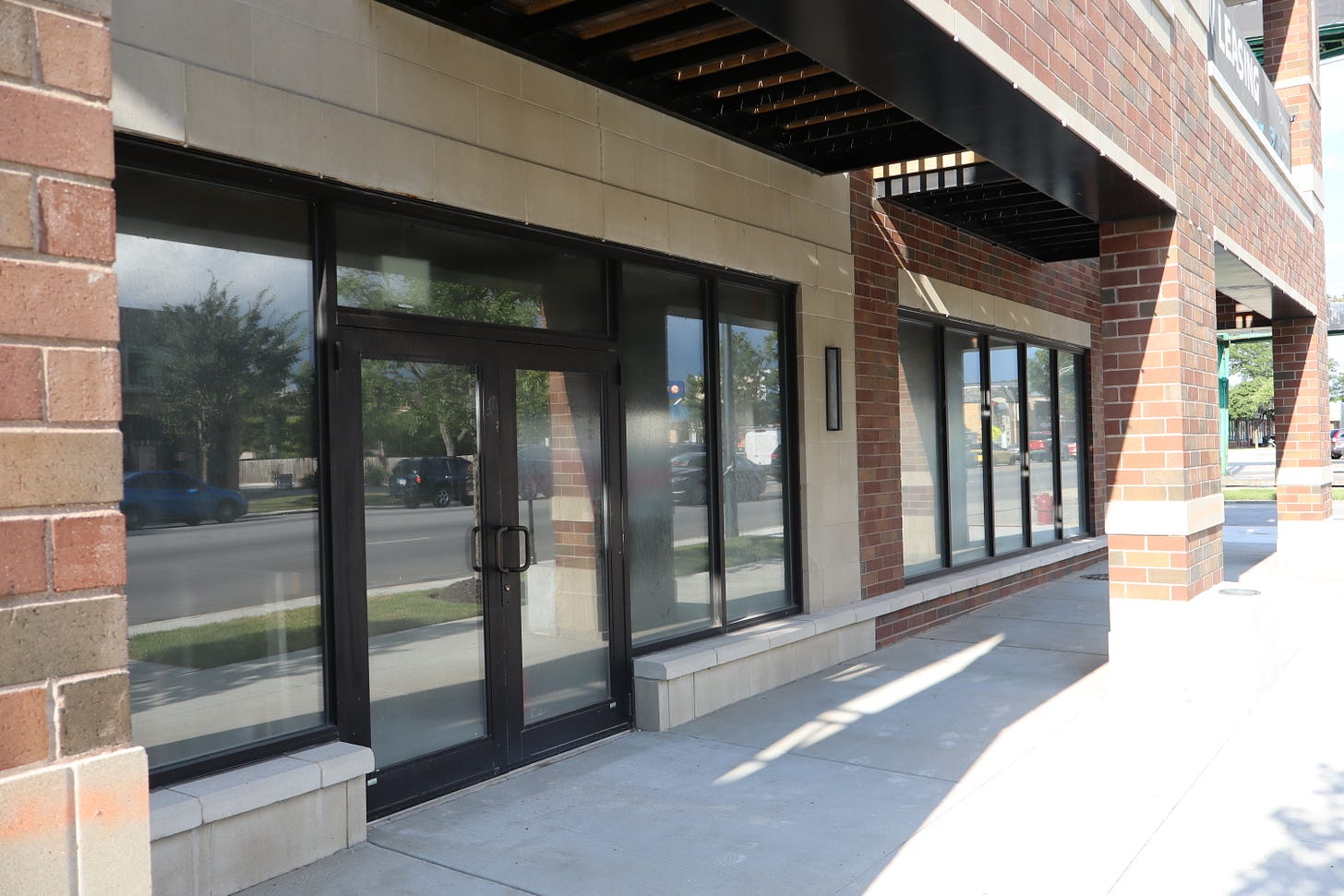
It’s been 14 years since the Galewood neighborhood had its own full-fledged neighborhood library.
In 2010, the Galewood - Mont Clare branch library near the intersection of Grand and Sayre avenues closed due to an issue with the building landlord. Nobody expected the closure to last very long. As the city looked for a new space, it opened a temporary library in a room at the Rutherford-Sayre Park fieldhouse to tide the patrons over. But that “temporary” arrangement lasted 10 years as plans for a full–fledged replacement came and went. Not even hundreds of thousands in state funding moved the needle.
The one-room library closed during the COVID-19 pandemic and never reopened.
The city came tantalizing close to a resolution in 2022. Developer Viktor Jakovljevic agreed to let the library system use a portion of the retrofitted U.S. Bank building at 6700 W. North Ave. Chicago would buy the space in what officials described as a condo-style arrangement. But the two sides couldn’t agree on the price, and the deal fell through.
Now, the city is looking at another property – the currently vacant former furniture store at 1751 N. Harlem Ave. Ald. Chris Taliaferro (29th), whose ward includes all of Galewood, said that, while the owner is willing to sell, the city wants to perform an environmental analysis first. In the meantime, Galewood residents remain leery as they wait to see if the latest in the long line of attempts bears fruit.
“We have no intention of abandoning the neighborhood”
The libraries have come a long way from being repositories of books, music, movies and other materials. They are places where patrons print documents, apply for jobs, take classes, and attend and organize events. Chicago Public Library (CPL) system lets Chicago residents book meeting and/or study rooms for free, check out equipment and request books and other materials from libraries throughout the country.
CPL has 81 buildings – the Harold Washington central library, three regional libraries and 77 neighborhood branch libraries. The city usually has one branch library per officially designated community area. Some community areas with multiple neighborhoods have several branches, but there ae also community areas that have none at all.
On the West Side, Austin and Humboldt Park community areas currently have three libraries each, West Garfield Park and North Lawndale has one each, but East Garfield Park has none. CPL website directs its residents to Richard M. Daley – West Humboldt Park branch at 733 N. Kedzie Ave.
The Galewood – Mont Clare library historically served the Galewood neighborhood in the Austin community area and the Montclare community area. It went through several locations, usually on the Montclare side. The last full-fledged location was a 4.000 square foot storefront of the mixed-use building at 6969 W. Grand Ave. As Chicago Sun-Times reported at the time, CPL was negotiating a new lease when it discovered that the landlords owed the City of Chicago “more than $70,000 in overdue fines and fees, including property taxes, water bills and building code violations at 12 commercial and residential properties across the city.”
As a city entity, CPL couldn’t rent from a business or an individual that owes the city money. When the lease expired in July 15, it had no choice but to close the branch. Mary Dempsey, who served as the library commissioner at the time, framed that as a temporary setback.
"We have no intention of abandoning the neighborhood. This is just sort of an unusual circumstance. It's an unfortunate situation. The neighborhood is unhappy. We're unhappy," she was quoted as saying. "We'll try to have an option open this summer. I don't know if it'll be permanent or not, but we want to get something open for the summer reading program."
The 400 square foot room was originally little more than a few bookshelves. In 2013, a group of Galewood residents tried to push CPL into action. Each person checked out one book - with 1,000 people participating, that was enough to nearly empty the shelves.
Over the next seven years, CPL made some investments, adding a book drop, a computer to access the library catalog, and eventually wi-fi.
Real estate agent Steve Green moved to Galewood in 2011. While he couldn’t speak to the storefront, he said the shortcomings of the fieldhouse location were self-evident.
“It was too small. It’s not really a library,” he said. "I picture a library having thousands of books to choose from, other resources, meeting rooms, classrooms, and [the fieldhouse location] had one room, and a limited number of books. It was an effort to have something temporary, it really fell short, unfortunately.”
To get a full-fledged library experience, Galewood residents have been going to North Austin branch library at 5724 W. North Ave., West Belmont branch at 3104 N. Narragansett Ave. and the Dunning branch. Green also pointed to Oak Park Public Library system’s main library at 834 Lake St. Under a long-standing agreement, CPL patrons can use suburban libraries (and vice versa) when they register their library cards there.
Green said that, while the Oak Park Library has a lot to offer, it’s no substitute for a local library.
“Library is important, I think, for the entire community,” he said. “It’s great for kids, preschool through [high school]. It’s great for adults, seniors. It’s a meeting place, a place to continue their education. It’s a focal point of any vibrant community. I still think it’s very important to have.”
10 Years of Failed Plans
Long-time Galewood resident Tom Drebenstedt, a retired construction manager and something of a neighborhood historian, campaigned for a new full-fledged branch from the beginning. He said that Deborah Graham, who was first appointed 29th Ward alderman in March 2010, was the “most helpful.”
“We actually got together with someone from the library [administration] and somebody from the park district and someone from the mayor's office, and we actually pursued ideas – and then she got voted out,” Drebenstedt said.
In 2015, Graham faced several challengers, and she and Taliaferro went into a runoff. Both supported the full-fledged Galewood library, and Taliaferro criticized Graham for not doing enough. He won the runoff election.
Drebenstedt said he wanted to give the new alderman a chance, he ended up disappointed.
“Now we have the current alderman, who keeps telling us – I’m talking to the mayor, and now we’ve had three mayors,” he said. “And here we are, years later, and nothing.”
In many interviews since he was elected, Taliaferro insisted that a full-fledged Galewood library was a priority for him, and he was doing everything he could to get it done.
The effort faced several stumbling blocks. First, there was geography. Green argued that, since most of Galewood is residential, the only place it could go was one of the commercial thoroughfares – North Avenue, which forms Galewood’s southern border, Harlem Avenue, which forms its western border. Going back to Grand Avenue “which is technically Montclare,” was also a possibility, he said.
“The only place where the library could go is the perimeter,” Green said. “It limits potential locations.”
CPL spokesperson Patrick Molloy previously told this reporter that the library system doesn’t have its own capital budget, so the money for the new branch must come from the city, or some other outside source.
Another issue was that the city took renting another space off the table after Rahm Emanuel was first elected mayor in 2011. During his two terms in office, CPL pivoted toward branches it or the city would own outright. In 2015, the Chinatown branch library moved from the rented space on the first floor of 2353 S. Wentworth Ave. to a larger two-story building at 2100 S. Wentworth Ave. The new branch cost $19.1 million to build, with $15.6 million of the funding coming from a Tax Increment Financing district that was created in 2013 specifically to help pay for the project.
Other library branches planned and built during the Emanuel administration were “co-locations,” where the branch shares a space with another public facility. The current Back of the Yards branch, which replaced a rented storefront in 2013, shares a building with a high school. Northtown branch library in West Ridge, Independence branch library in Irving Park and the new Little Italy branch opened on the first floors of the Chicago Housing Authority-owned senior housing buildings.
Drebenstedt said that he didn’t understand why that option wasn’t pursued in Galewood.
“I understand construction,” he said. “If there is a tight budget, I mean, they gotta make financial decisions. But I really don't like the idea that other neighborhoods are getting libraries because they're being creative and putting them in the base of the senior housing.”
In 2019, developers Five Thirty One Partners submitted a proposal to redevelop a vacant U.S. Bank building and two nearby lots. They offered to put the branch library in one of the buildings, because they wanted to offer a community asset. But, according to Taliaferro, that didn’t get far because of the policy against renting spaces.
During a June 2019 community meeting, which took place after Emanuel’s second term ended, Taliaferro said that the former mayor proposed building a branch near Sayre Elementary School in the heart of Galewood, at 1850 N. Newland Ave. The alderman felt it was a bad location because it would cause traffic congestion, especially when parents are dropping kids off at school, and because he was worried there wasn’t enough parking.
When the Illinois General Assembly passed the Rebuild Illinois capital bill in 2019, State Rep. Camille Lilly (78th) and State Sen. Don Harmon (39th) successfully lobbied to set aside $600,000 “for a grant to the Galewood Library for costs associated with reconstruction projects.” Lilly confirmed that the language was broad enough to allow flexibility and not tie it down to any specific location.
While Galewood library was still stuck at the one-room space, other West Side libraries received some improvements. Most notably, Legler Library at 115 S. Pulaski Rd. was upgraded from a West Garfield Park branch library to a West Side regional library in late 2020. It gained a new teen section, complete with an expanded YOUmedia multimedia space, a larger computer lab, a Maker Space, a new auditorium and a dedicated space for CPL’s first in-house artist.
A year earlier, Douglass branch library in North Lawndale, at 3353 13th St., got its own YOUmedia space, as well as more study and meeting rooms. Austin branch library at 5615 W. Race Ave. and North Austin library got more modest improvements that, most notably, let more sunlight into the buildings.
“Somehow, you can’t satisfy the politicians”
All libraries went into lockdown at the height of the COVID-19 pandemic. CPL reopened most branches in early June 2020, but the three branches that were too small for social distancing stayed closed. While Canaryville and Water Tower benches eventually reopened, the Galewood-Mont Clare branch never did.
Meanwhile, the conversation about a full-fledged branch library never stopped. In 2020, a group of Galewood residents formed the Galewood Neighbors community organization with the goal of “working toward the betterment of our community, parks, schools and businesses for our overall quality of life.” Getting the Galewood library up and running became a major priority. Green became its chair and Drebenstedt became its treasurer.
The General Assembly kept renewing the $600,000 appropriation. In 2021, Harmon and Lilly secured another $7 million in state capital funding. Lilly said it can be used to either build a new library from scratch or build within a larger space.
“Don Harmon and I, we're committed to getting the library up and going in the Galewood area, which is in our districts,” she said in a recent interview, adding that she ultimately wants to see the branch at a location the community would support.
The U.S. Bank proposal went through several changes. By 2021, Five Thirty One Partners settled on gut-rehabbing the two-story bank building and adding a new third floor. The top two floors would be apartments, but the first floor would be mostly commercial space, and the developer was still willing to set up to 12,000 square feet aside for the library. At the time, Taliaferro said that, with Lori Lightfoot now mayor, CPL was willing to give it a second look. Molloy told this reporter at the time that the U.S. Bank property was just one of the potential sites they were considering.
For much of 2022, the two sides were still going back and forth, with the term of the lease being a major point of contention. But during his Sept. 21, 2022 ward community meeting, Taliaferro announced a breakthrough. In an arrangement that he compared to buying a condo, the city would buy the 12,000 square feet space and Jakovljevic would retain the ownership of the rest of the building.
Jakovljevic said that, while he would’ve preferred renting, he was willing to go along with it. He specifically designed the space to fit the code requirements for the library.
“What we promised we delivered, for the library,” he said.
But Jakovljevic emphasized that he couldn’t wait too long – after all, he had to get a return on his investment.
“We were very clear where we need to be, because our cost was huge of just developing the space for them, because it was an existing building,” he said. “We were always clear on that number.”
Judith Alexander is the chair The North Avenue District (T-NAD), a nonprofit that works to revitalize the North Avenue corridor between Austin Boulevard and Harlem Avenue on both Galewood and Oak Park sides. She said the organization supported the North Avenue location.
“It would've been wonderful,” Alexander said. “It would've brought more foot traffic. It would've just brought more people to our district, and that's a good thing. That would've helped our businesses, and it would've just made it a more viable commercial area. You obviously need people to have a viable commercial area.”
She also said that the location would be within walking distance of Sayre Elementary on the Galewood side and William Hatch elementary school on the Oak Park side. CTA bus route 72/North and Pace bus route 311 both serve the building. And, while Alexander didn’t mention it, it would provide another library options for northern Oak Park residents.
Green supported the location as well, citing its walkability.
All the two sides had to do was agree on the price.
During his May 22, 2023 meeting, Taliaferro said that the city got the appraiser, but the price was too low for Jakovljevic. At the time, Green said that it was his understanding that the city hired a residential appraiser who didn’t take the retail spaces into account. Jakovljevic told Westside Review in a recent interview that the price was “absolutely ridiculously low.”
The city then hired a second appraiser, who Jakovljevic said gave them a number that was closer to what they were looking for, but not quite enough to justify the investment Five Thirty One Partners had already made. While he declined to disclose the exact numbers, he said that they were “a few hundred thousand” dollars apart.
“They tried to kind of negotiate with us, and we had a fixed spot that we couldn't go below,” Jakovljevic said. “We decided that it was better for our partnership to own a whole building than selling at the price that doesn't work for us.”
He said that, given all the state funding, he didn’t understand the city’s position.
“It was funded by the state, so that didn't cost Chicago anything, zero, and they chose not to do it,” Jakovljevic said. “And [almost] 15 years later, there’s still no library.”
He described the negotiations as frustrating, saying that there were a couple of times when it seemed like everything was settled, only for the city to ask for changes.
“They agreed on many things, and somebody else would get involved and things would fall apart,” Jakovljevic said. “We tried for years [to make the library happen] and somehow, you can't satisfy the politicians, the city. It’s very hard to do.”
He confirmed that, as late August, the apartments have been leased. Jakovljevic said that there were commercial spaces in the basement that that were about 70% leased. As for what would’ve been the library space, he said Five Thirty One Partners is looking for a tenant, but they want to make sure that it’s the right fit for the corridor.
“We are okay with siting on that space for a while,” Jakovljevic said. “We need the right tenant for the community. Maybe healthcare, a physical therapist - that's the type of [tenant] we' were looking for.”
CPL didn’t respond to calls and emails seeking comment.
The Harlem Avenue site
Taliaferro said that, after the negotiations ended sometime in the spring of 2024, the city went looking for other sites.
The Harlem Avenue building is part of a half-block shopping strip, between Amato’s Pizza and a daycare. The building looks like a relatively modest storefront from Harlem Avenue, but appearances are somewhat deceiving. The structure extends further back than most other storefronts, all the way to the alley, and the rear part has a second floor. Together, CPL would have 1,500 sq. ft. available.
As with the North Avenue site, the branch would benefit the nearby suburb – in this case, Elmwood Park.
Taliaferro said that, during inspection, the city found underground storage tanks. Taliaferro said that he didn’t know what the tanks might have contained, but the city is currently looking into any environmental hazards they may pose. Once it gets a sense of the environmental remediation costs, it will decide whether to buy the building Taliaferro said that he had no idea when the analysis might be completed.
What exactly the tanks might be remains an open question. Westside Review looked into historical records. The earliest reference we were able to find shows that the building was home to a Chicago Furniture Mart location and a Roxy Rug Co showroom. Between 1959 and 1979, it was Nelson Brothers furniture store chain’s West Side location. More recently, it was home to Chicago Shirt & Lettering company.
Green said he was aware that the city was looking at Harlem Avenue, and he thought that the space had potential.
“It’s a nice storefront, you know,” he said. "It's got curb appeal, and I’m sure people would use it.”
Alexander said she didn’t know the city was looking at Harlem Avenue space, but she thought the North Avenue site was “just a better location, it's just a more central, more accessible location.”
“It would have less light,” she added. “It's just much less desirable from a community perspective.”
Alexander said that, as far as T-NAD was concerned, it didn’t make sense that Jakovljevic and CPL couldn’t come to an agreement, given almost $8 million in state funding.
“We're puzzled,” she said. “Even if the library thought the developer was asking too much money, they had the money, from the state, to buy it and furnish it. They had the money, and it was a better location for the community, which I don't think anyone would disagree with that.”
Alexander and Green both felt that the lack of parking would be an issue, especially for patrons coming from the further east and north. CTA Route 90/Harlem and Pace Route 307 both serve this stretch of Harlem Avenue.
In a recent interview, Lilly said that she and Haron remain hopeful about the process.
“The delays, we're not happy about it, of course, but I think with the new administration, the Johnson administration, they want to move on it,” she said.
Lilly said that she heard the concerns about the lack of parking. She proposed that, in the long run, the city should look at another alternative – the Mars Wrigley chocolate factory on the other side of the railroad tracks from Rutherford Sayre Park.
In January 2022, the company announced that it would vacate the 20-acre site by the end of 2024. They worked with Local Initiatives Support Corporation of Chicago (LISC) to get community input for what happened next. A new branch library was one of the ideas, but that took a back seat as the U.S. Bank site negotiations seemingly got serious.
Lilly suggested having the Harlem Avenue location as a “satellite” library and the larger library at the Mars site. But she also acknowledged that, given that the confectionery company is still looking for a developer and many proposals would require a zoning change, the former furniture store was more likely to be available first.
“I think they, meaning Mars, are to whatever the community wants [at the factory site],” Lilly said. “They were very supportive.”
Green said that he would support the branch library at the Mars site in the long run as well.
Drebenstedt said he didn’t have much optimism.
“I guess I would appreciate some honestly,” he said. “Okay, if there's no financial way of doing this – tell me that. Instead, they just keep leading people on.”
Taliaferro said that he understood why his constituents were frustrated.
“It can be frustrating. But Rome wasn't built overnight, and some projects take a bit longer than others. The goal is to stay focused and bring this resource into the community. But, you know, if it were easy, everybody would be doing it.”




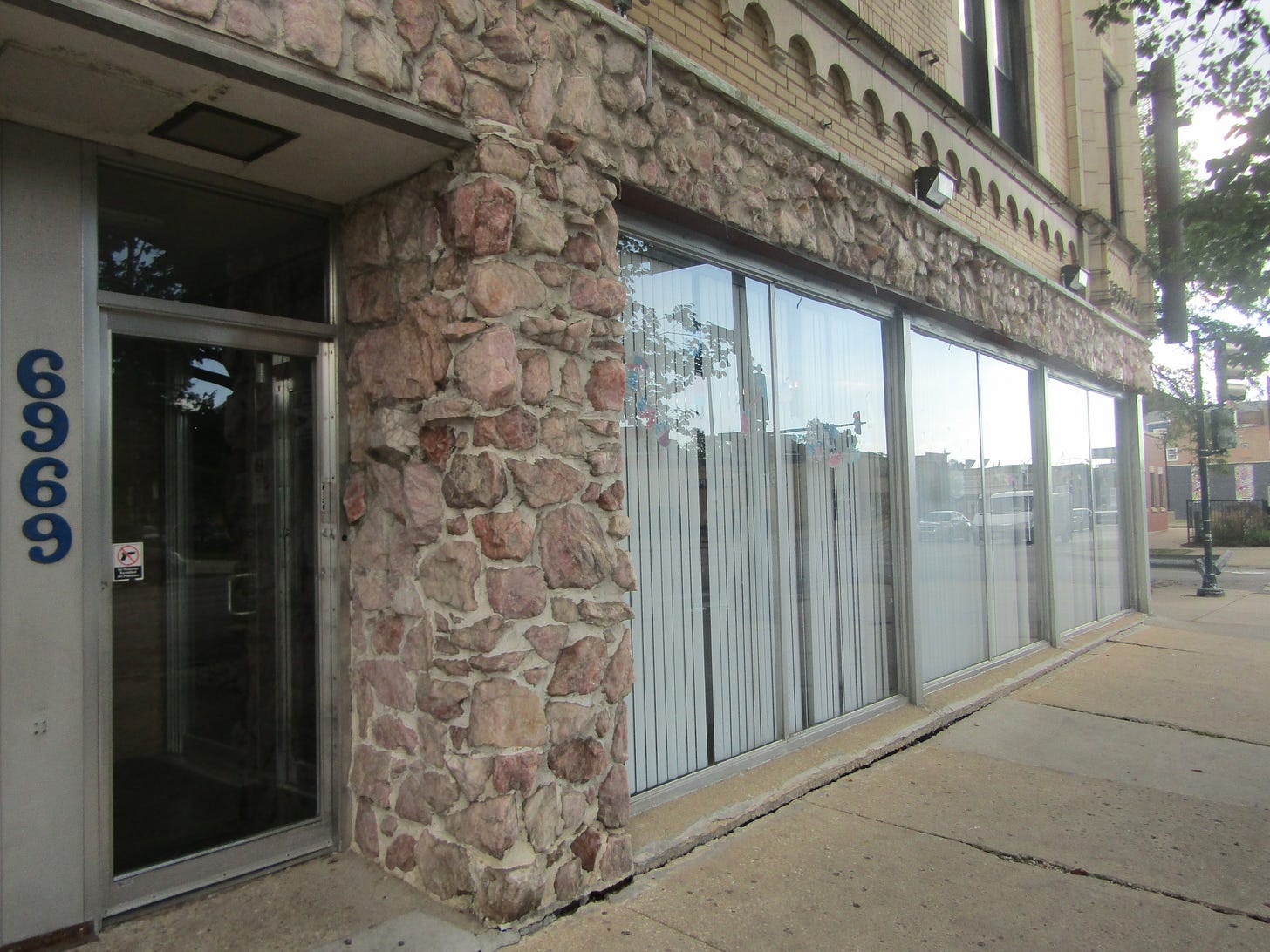
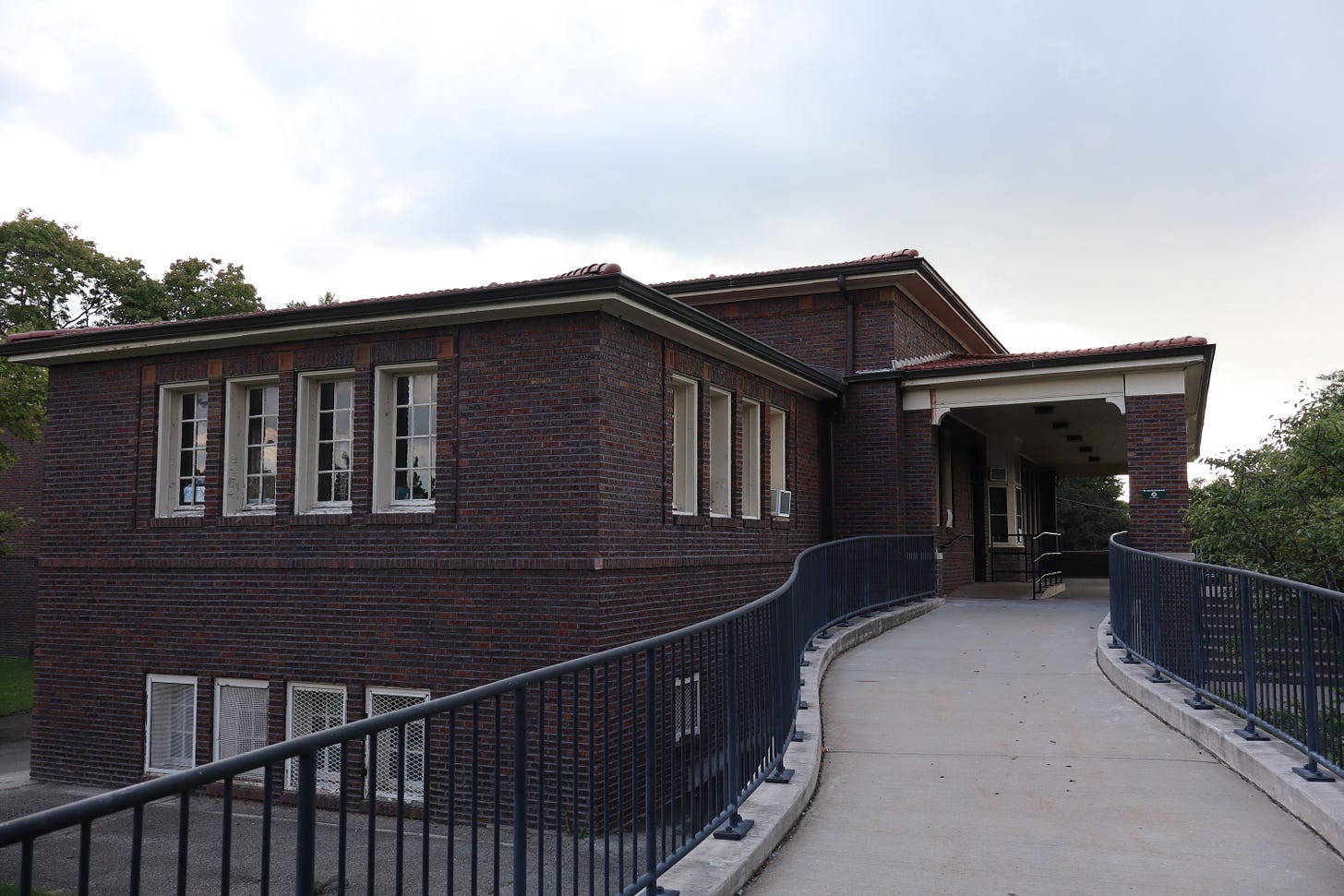
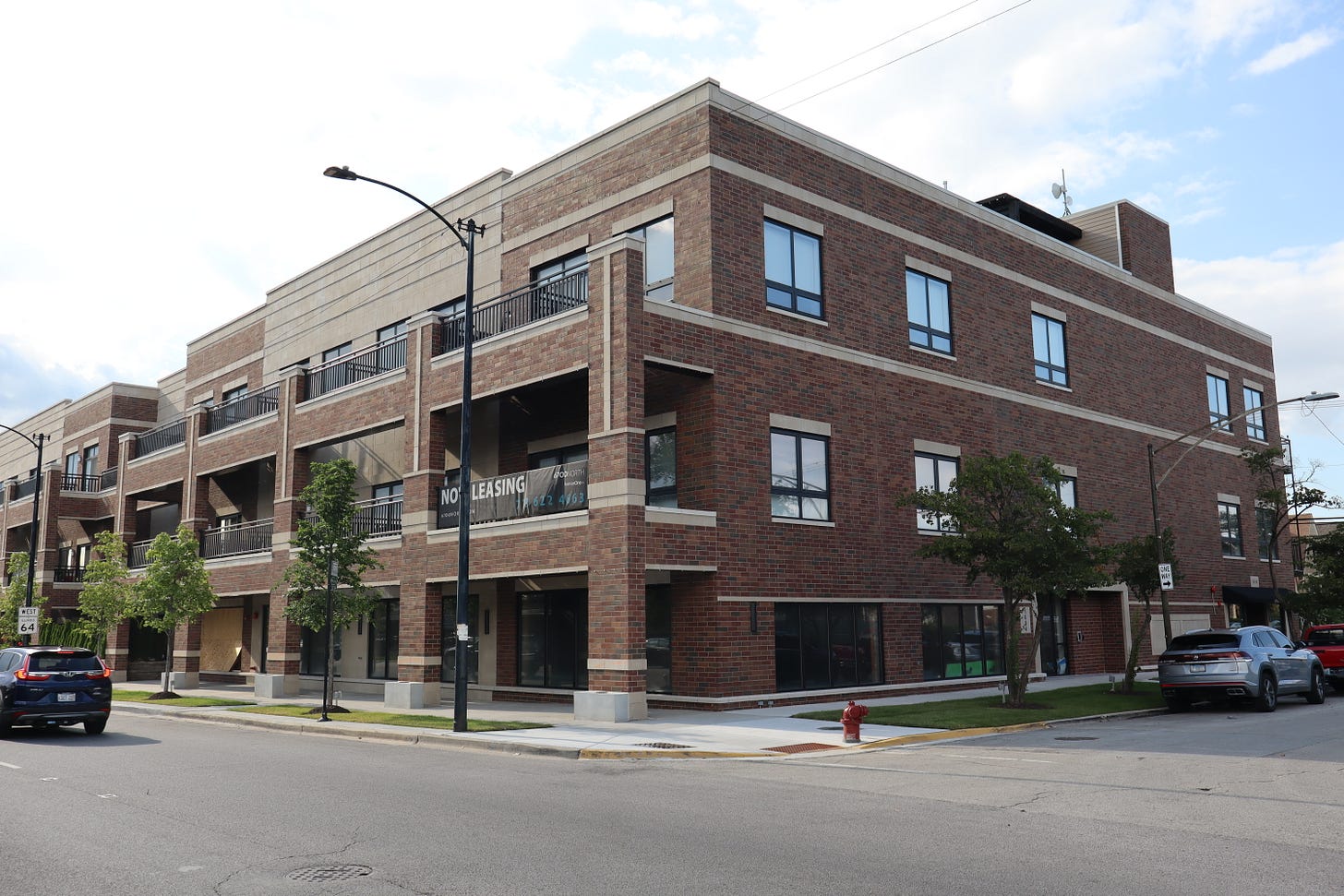
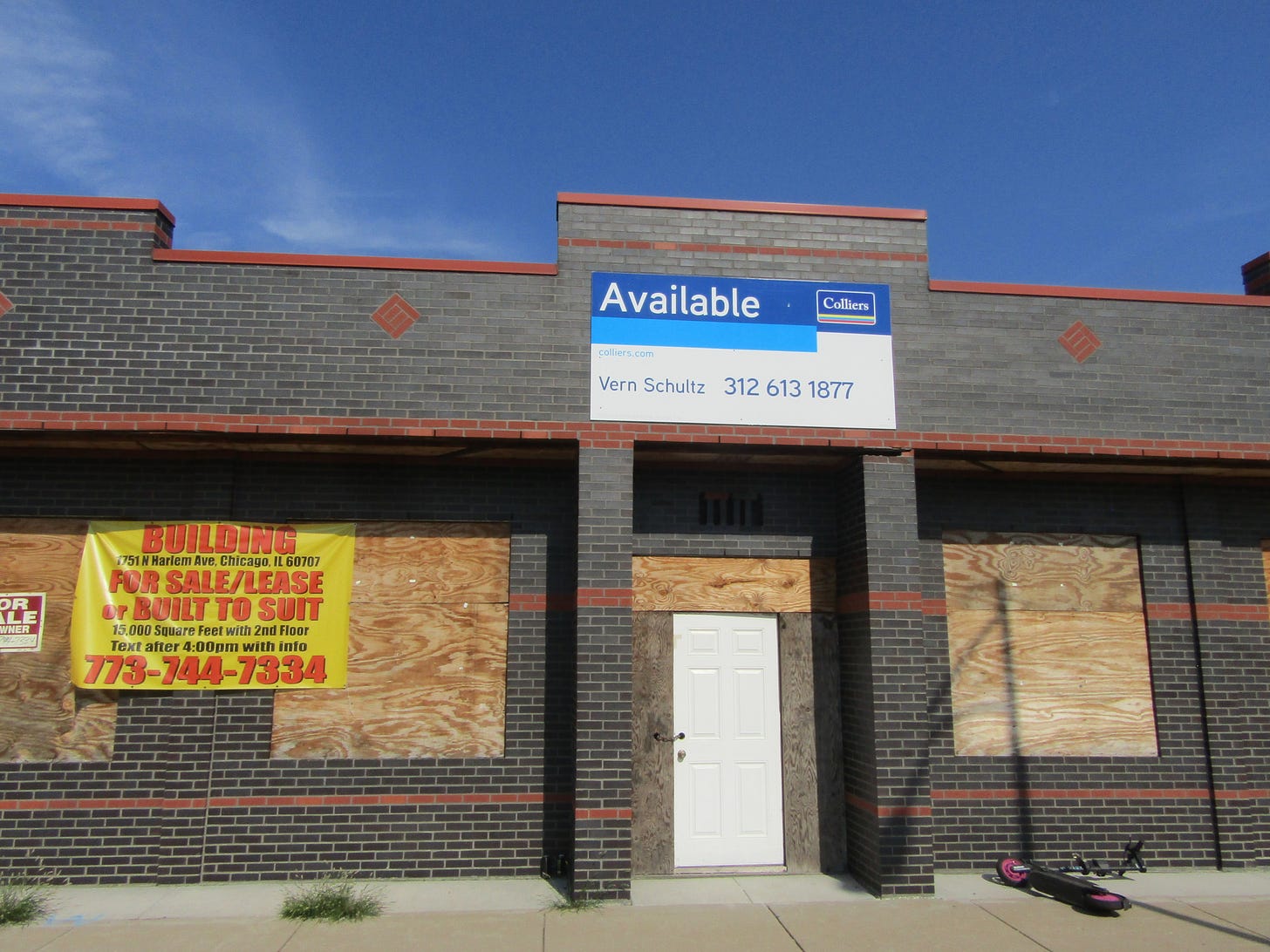
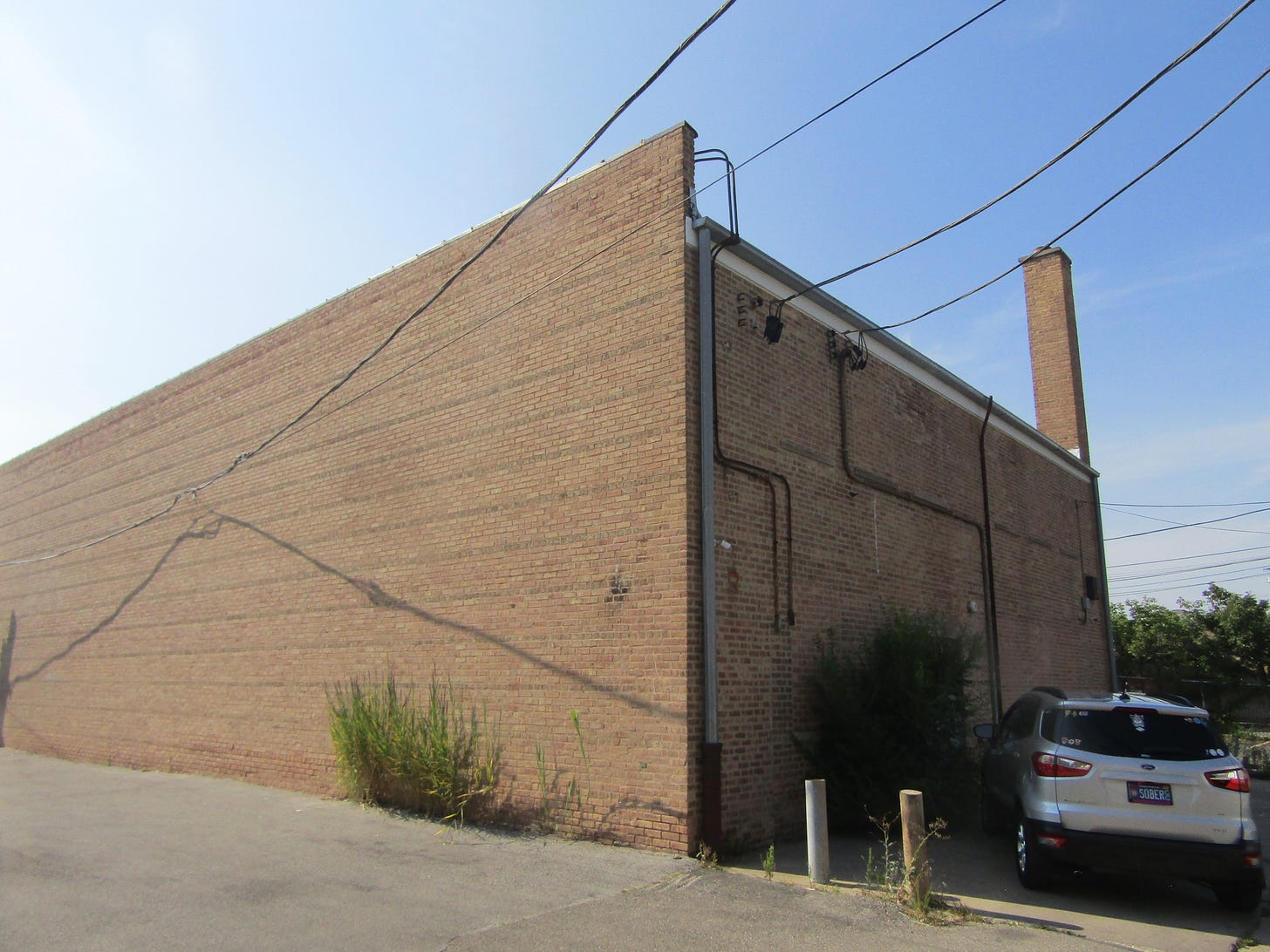
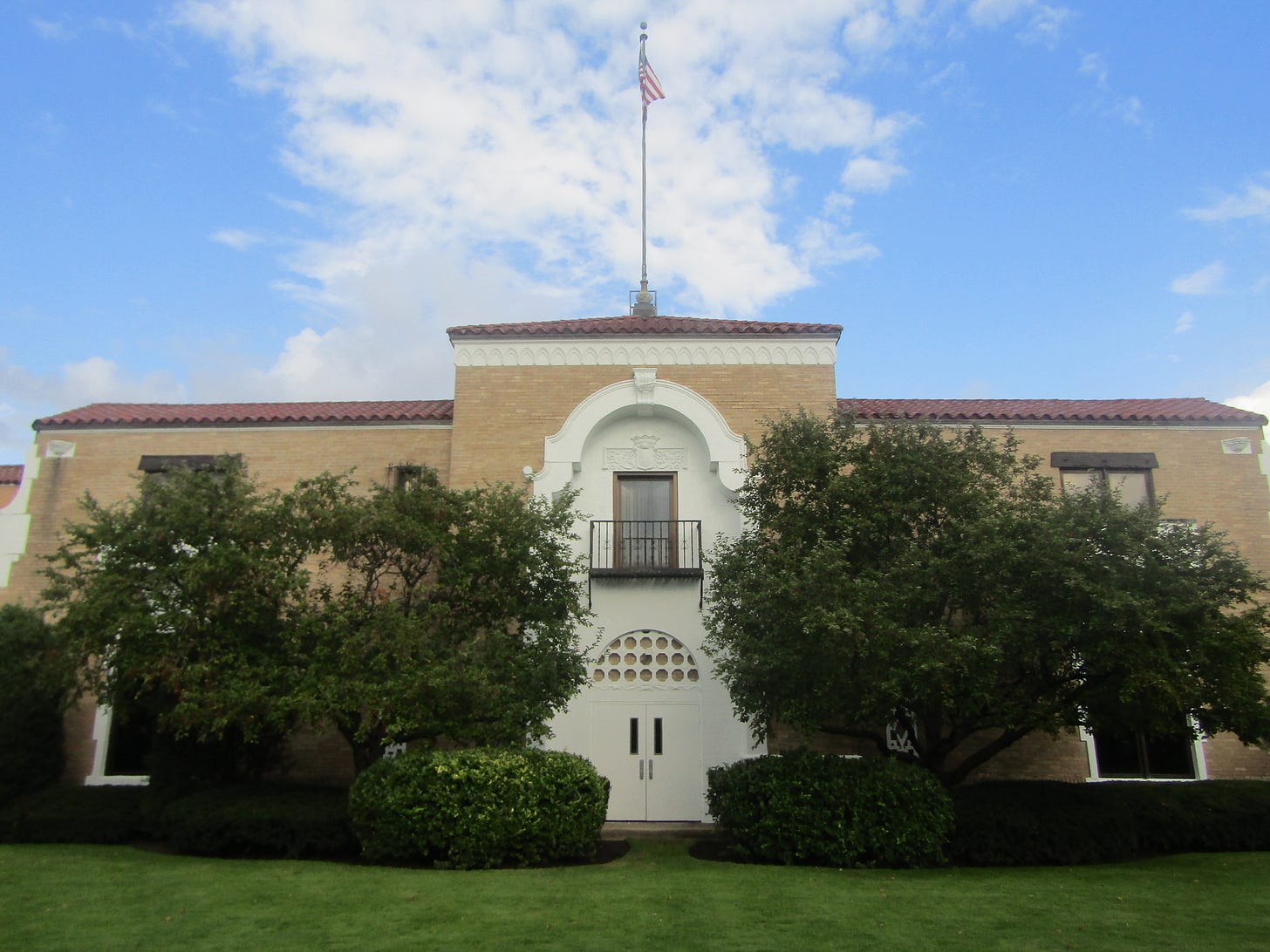
What a disappointment. I wasn't a huge fan of the North Ave location and this Harlem Ave site I believe to be even worse(seriously, 1500sq ft?) with absotely no parking. Just wow. What about the vacant TCF site near the tracks? or the abandoned Mcdonalds up the street? all seem to make a lot more sense.